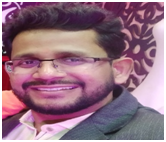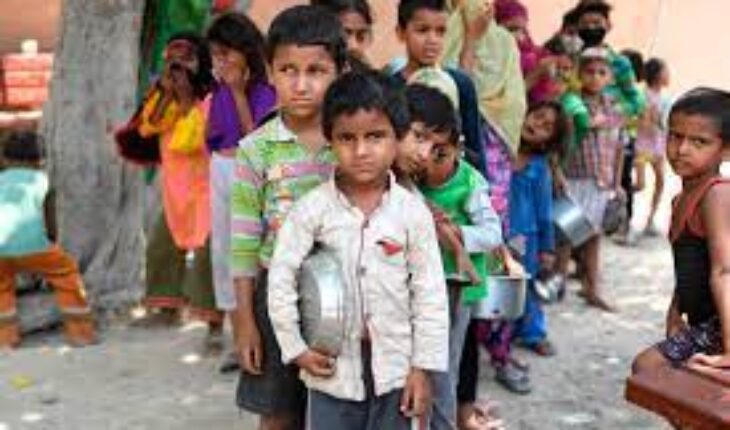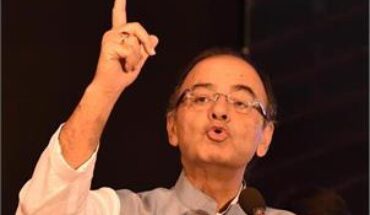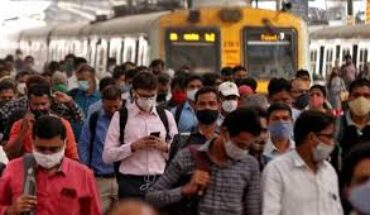
Punjab is one of the resourceful states in India. Punjabis are known for their nature of giving and forgiving. They are well known for their good eating habits. The state serves as the food basket of the country. Food produced in the state is distributed across the country and exported to other nations. In a food surplus state like Punjab, it needs adequate courage to write something about poverty as a challenge.
I. Poverty scenario in 2011-12
The nationwide household consumption survey by the NSSO held in 2011-12 says that 8.2 percent of the population of the state live below the poverty line, 7.6 percent in rural and 9.2 percent in urban. This ratio is relatively lower compared to 22 percent of national averagepoverty ratio which includes 25 percent of poverty in rural and 14 percent in urban.
The people living below the poverty line is one of the important measures of poverty. This measure counts the number of people or household fall below a pre-defined income or consumption expenditure. As a result, under this measure, every household below this line is considered equal. The extreme or severity of poverty is not adequately explained by this measure.
The other measure i.e., Poverty Gap Ratio (PGR) as defined under the SDG national indicator framework 3.1 explains the extreme or severity of poverty in a state. PGR is defined as the gap ratio by which mean consumption of the poor living below poverty line falls short of the poverty line. It indicates the depth of poverty. A higher PGR ratio shows a higher level of poverty intensity.
By the measure of PGR index, Punjab stands far below the national average. With the help of NSSO HCE survey 2011-12, the estimated PGR for Punjab is 1.2 for rural and 1.6 for urban. At all India level, the estimated PGR is found to be 5.05 for rural and 2.7 for urban.
The extreme poverty in Punjab as measured by PGR varies at district level. In the district of Fatehgarh Sahib, the PGR stands the highest at 2.7 percent followed by 2.6 percent in Hoshiarpur. In other districts such as Barnala, Moga, Sangrur and Tarn Taran, the PGR stands higher than 2 percent. The good news for the state is that few districts such as Amritsar, SAS Nagar stand with the lowest PGR of 0.1 percent and 0.2 percent respectively.
II. Poverty scenario at present
There is no nation-wide household consumption expenditure survey after 2011-12. This creates problems to count poverty ratio in the recent past and track the development related to nation and state level poverty reduction.
The Situation Assessment Survey (SAS)for agriculture households by the NSSO can provide some information about status of poverty in rural India and states.Estimation from SAS in the last two rounds i.e. 70th in 2013 and 77th in 2019 shows, that there is an increase in poverty percentage among agriculture farmers in Punjab. The agriculture poverty in the state was 2.7 percent in 2013 and increased to 7.3 percent in 2019. However, at all India level, there is a decrease in poverty percent from 20.9 to 14.1 during 2013 and 2019.
According to SAS held in 2013, the average monthly income of agriculture households in India was Rs. 6400. This average monthly income increased to Rs.10218 in 2019, as per the 77th round in 2019. The annual average growth of farmers’ income in nominal values during 2013-2019 is9.8 percent. However, average annual growth of price level as measured by Consumer Price Index (CPI) withbase 2011-12 is 5.3 percent. As a result, the growth of farmers’ real income during 2013 and 2019 was 4.6 percent per annum.
In 2013, the average monthly income of the farmers in Punjab was Rs.18014 and it increased to Rs. 27,008 in 2019. In real terms (as indexed by CPI inflation), the average incomein 2019 stands at Rs.20,635. This shows that the annual average growth of real income of the farmersin the state is 2.4 percent during 2013 and 2019, which is less compared to all India average growth in farmers’ income.
The recent development in poverty measurement i.e. Multi-Dimensional Poverty (MPI) which includes various other indicators such as education, health along with consumption expenditure found Punjab in a better position. The estimated MPI score for Punjab in 2018 stands at 0.024 compared to all India’s MPI score of 0.4. However, at district level in Punjab there are wide differences in existence of poverty in terms of MPI. Firozpur stands first with the highest MPI of 0.047 whereas, Jalandhar ranks the lowest with MPI score of 0.008.
III. Poverty as a challenge
The above estimates show that absolute poverty, extreme poverty and poverty in tits multi-dimensional form exist in the state. In some of the districts, the level of poverty is even harsh. The rising agriculture poverty is not a good sign of development. However, the comparative better-off position of the state in various poverty indices though serves as matter of relief.
Going ahead further, it is a challenge to make the state poverty free, not just to serve the commitment under SDG but to restore the self-respect as a developed state in the country. The challenge can be even bigger in future as the state economy is not in a better position.
Economic growth which is important for addressing the issue of poverty is lower compared to many other states in India. During the pandemic year 2020-21, the GSDP growth in the state fell by over 7 percent. The post pandemic recovery in growth is also not satisfactory. In 2021-22, the registered growth rate is less than 6 percent whereas, the same in Telangana, Odisha and Andhra Pradesh is above 10 percent.
Second, the state government is not in a better financial position to support the development programs which could better address the poverty exists in both rural and urban areas. The government debt has come closer to 50 percent of the GSDP and the fiscal deficit stands at 3 percent. A major share of the fiscal deficit is used to honour the existing debt burden. The state government is not in a position to expand the capital spending which could help generating local employment and contribute to poverty reduction. Therefore, poverty in the state though stands at a relatively lower level, it is a challenge to eliminate it in all forms by 2030 as SDG commitment.
Dr. Sridhar Kundu, Bharti Institute of Public Policy ,Indian School of Business, Mohali, Punjab






